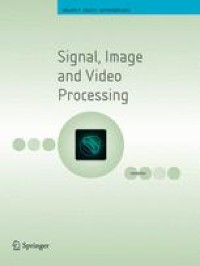|
Anapafseos 5 Agios Nikolaos 72100,Crete,Greece,00302841026182,00306932607174,alsfakia@gmail.com
Blog Archive
- ► 2022 (3010)
-
▼
2021
(9899)
-
▼
April
(838)
-
▼
Apr 04
(100)
- Eruptions of sebaceous adenomas and carcinomas ind...
- Adult-Onset Eccrine Angiomatous Hamartoma: A Case ...
- Good Response to Tofacitinib in Refractory Amyopat...
- Atypical Palmoplantar Pityriasis Rosea
- Hives After Handling Honey
- Comedonic Lupus: An Unusual Presentation of Cutane...
- Surgical Technique for Muscle Biopsy
- RF - Generalized Morphea: Definition and Associations
- A «Cesarean Scar»—With No C-Section!
- Secukinumab: Drug Survival in Clinical Practice Se...
- Tumor arteriovenoso: pistas dermatoscópicas para s...
- Cold-associated perniosis of the thighs (CAPT).
- Painful Nodules on the Thighs
- Dermatologic Conditions of Eminent Historical Figures
- Phototherapy for Prurigo Nodularis: Our Experience...
- Dermoscopy in Basal Cell Carcinoma: An Updated Review
- Cutaneous Manifestations in Patients With COVID-19...
- The Most Useful Pharmaceutical Formulations (Indiv...
- Sonidegib in the Treatment of Locally Advanced Bas...
- alms1 mutant zebrafish do not show hair cell pheno...
- Risk factor analysis of allergic rhinitis in 6–8 y...
- IBCC – Malignant Hyperthermia
- Foreign body aspiration in children: Treatment tim...
- Early surgical intervention enhances recovery of s...
- Development and validation of an automated dichoti...
- Cry features of healthy neonates who passed their ...
- Characteristics and overall survival in pediatric ...
- Prognostic factors for the improvement of pain and...
- Vehicle Odometry with Camera-Lidar-IMU Information...
- The Vicarios Virtual Reality Interface for Remote ...
- Percutaneous operative treatment of fragility frac...
- Rhamnolipids Application for the Removal of Vanadi...
- Carbon-ion radiotherapy subsequent to balloon-occl...
- Comparing ontologies and databases: a critical rev...
- Knowledge-Based Hierarchical POMDPs for Task Planning
- Ultrasonic bone removal from the ossicular chain a...
- Characteristics of pediatric thoracic trauma: in v...
- Genome-Wide Identification and Analysis of Chromos...
- Moheibacter lacus sp. nov., Isolated from Freshwat...
- Inhibition of Cdc20 suppresses the metastasis in t...
- Automated image splicing detection using deep CNN-...
- Effects of Co-Applications of Biochar and Solid Di...
- A Review of Robotic and OCT-Aided Systems for Vitr...
- The role of 2-hydroxyglutarate magnetic resonance ...
- Serum concentrations of dihydrotestosterone are as...
- Exosomal miR-21-5p contributes to ovarian cancer p...
- Long-term Emergency Department Visits and Readmiss...
- Incidence and OR team awareness of “near-miss” and...
- Association of adherence to the Mediterranean diet...
- Evaluation of cardiac function and systolic dyssyn...
- Prevalence of hydroxychloroquine retinopathy with ...
- Targeted high concentration botulinum toxin A inje...
- Multiple system inflammatory syndrome associated w...
- Lung cancer mimicking systemic lupus erythematosus...
- Increased influenza vaccination rates in patients ...
- Knowledge gap about immune checkpoint inhibitors a...
- A retrospective comparison of respiratory events w...
- Primary central nervous system lymphoma in neurops...
- Antibody subtypes and titers predict clinical outc...
- The association of Candida and antifungal therapy ...
- Distinct phylogeographic patterns in populations o...
- Risk and clinical outcomes of COVID-19 in patients...
- Sneddon syndrome: under diagnosed disease, complex...
- Prevalence of hydroxychloroquine retinopathy with ...
- Targeted high concentration botulinum toxin A inje...
- Multiple system inflammatory syndrome associated w...
- Lung cancer mimicking systemic lupus erythematosus...
- Increased influenza vaccination rates in patients ...
- Knowledge gap about immune checkpoint inhibitors a...
- The global prevalence of rheumatoid arthritis: a m...
- A retrospective comparison of respiratory events w...
- Plasmacytoid dendritic cells and type I interferon...
- Increased risk of mental health disorders in patie...
- Primary central nervous system lymphoma in neurops...
- Cross-cultural adaptation and psychometric testing...
- Patient perspectives on how to improve education o...
- Use of conventional synthetic and biologic disease...
- Antibody subtypes and titers predict clinical outc...
- Therapeutic approaches to pediatric COVID-19: an o...
- Disease recurrence after colorectal cancer surgery...
- Asymptomatic vs Symptomatic Primary Hyperparathyro...
- Short-term results of the combined application of ...
- Comparison of the efficacy and safety of anti-VEGF...
- Does Familial Mediterranean Fever Provoke Atherosc...
- High Acuity Therapy Variation Across Pediatric Acu...
- Heel fat pad involvement in rheumatoid arthritis: ...
- Periodontal disease and risk of mortality and kidn...
- Mucins reprogram stemness, metabolism and promote ...
- Molten salt derived crystalline graphitic carbon n...
- Local application reduces number of needed EPC for...
- Unusual cause of hypoxia due to incomplete removal...
- Comparison of Liver Recovery After Sleeve Gastrect...
- Establishment and characterization of 38 novel pat...
- Geriatric assessment and medical preoperative scre...
- A Stakeholder-Engaged Process for Adapting an Evid...
- MiR-193a-3p Promotes Fracture Healing via Targetin...
- Right-sided Zenker’s diverticulum resected using i...
- No evidence for an effect of working from home on ...
- Catheter Ablation of Atrial Fibrillation in Heart ...
- The comparison of STA-MCA bypass and BMT for sympt...
-
▼
Apr 04
(100)
-
▼
April
(838)
- ► 2020 (4138)
- ► 2019 (2429)
Αλέξανδρος Γ. Σφακιανάκης
Sunday, April 4, 2021
Automated image splicing detection using deep CNN-learned features and ANN-based classifier
Subscribe to:
Post Comments (Atom)



No comments:
Post a Comment